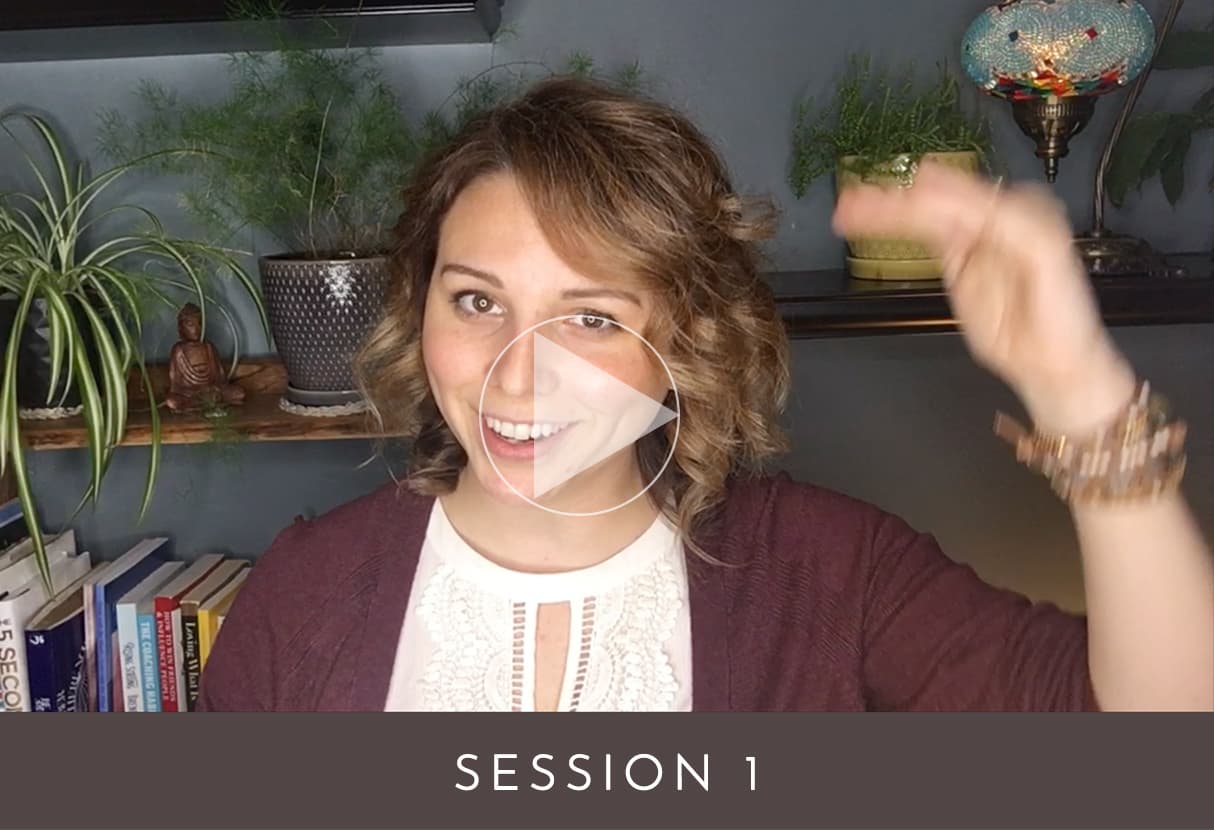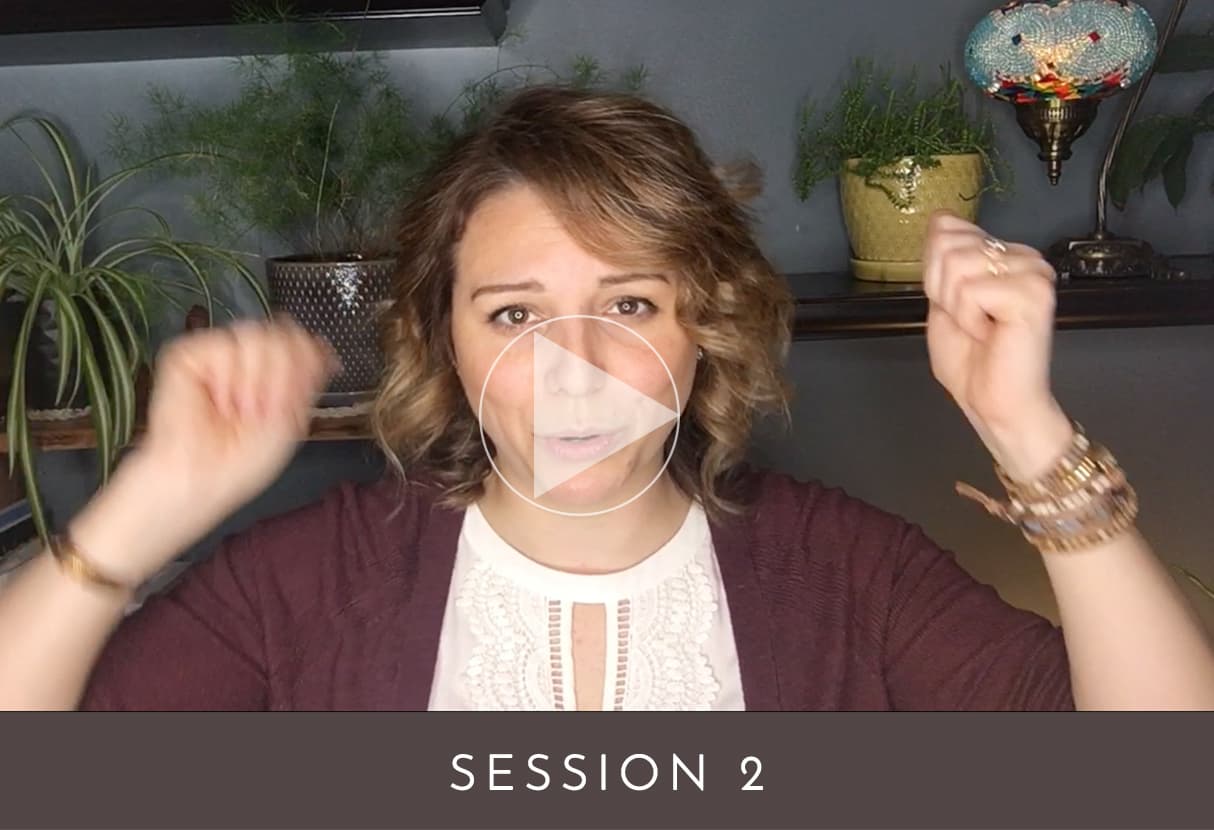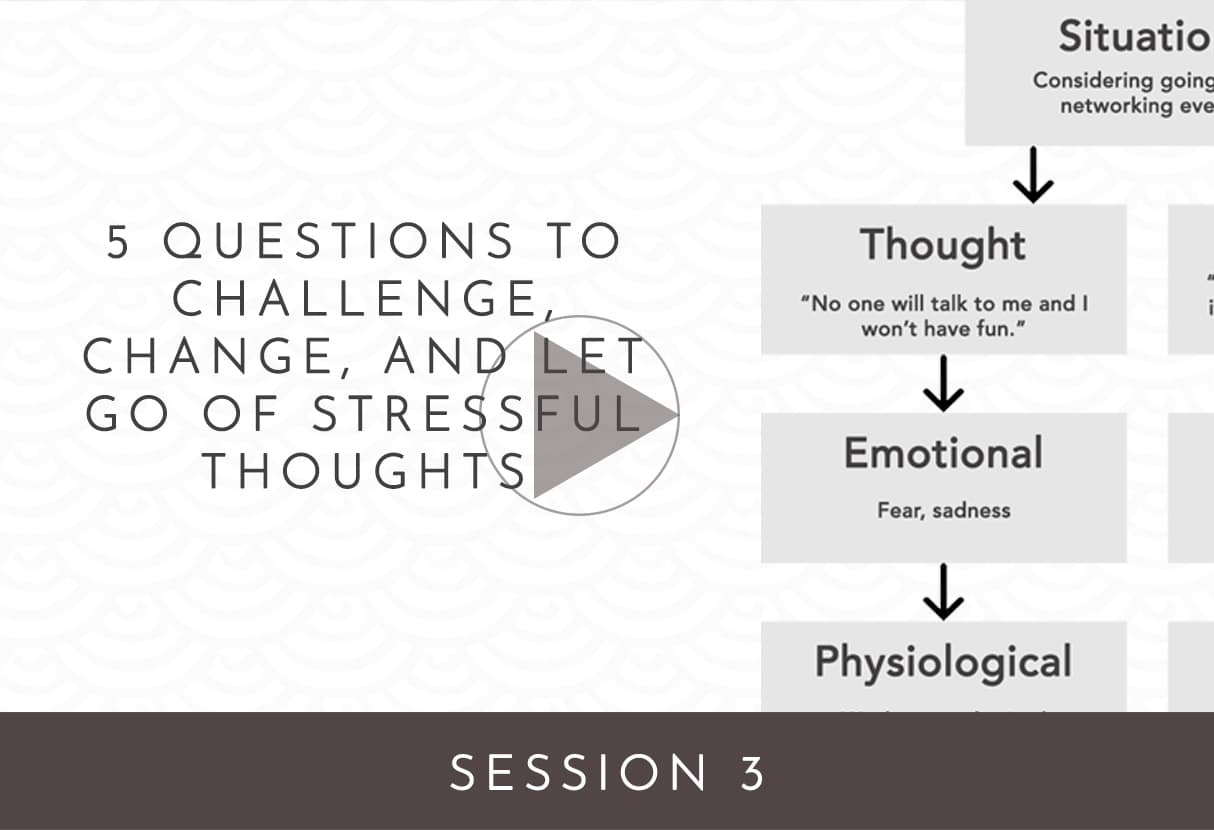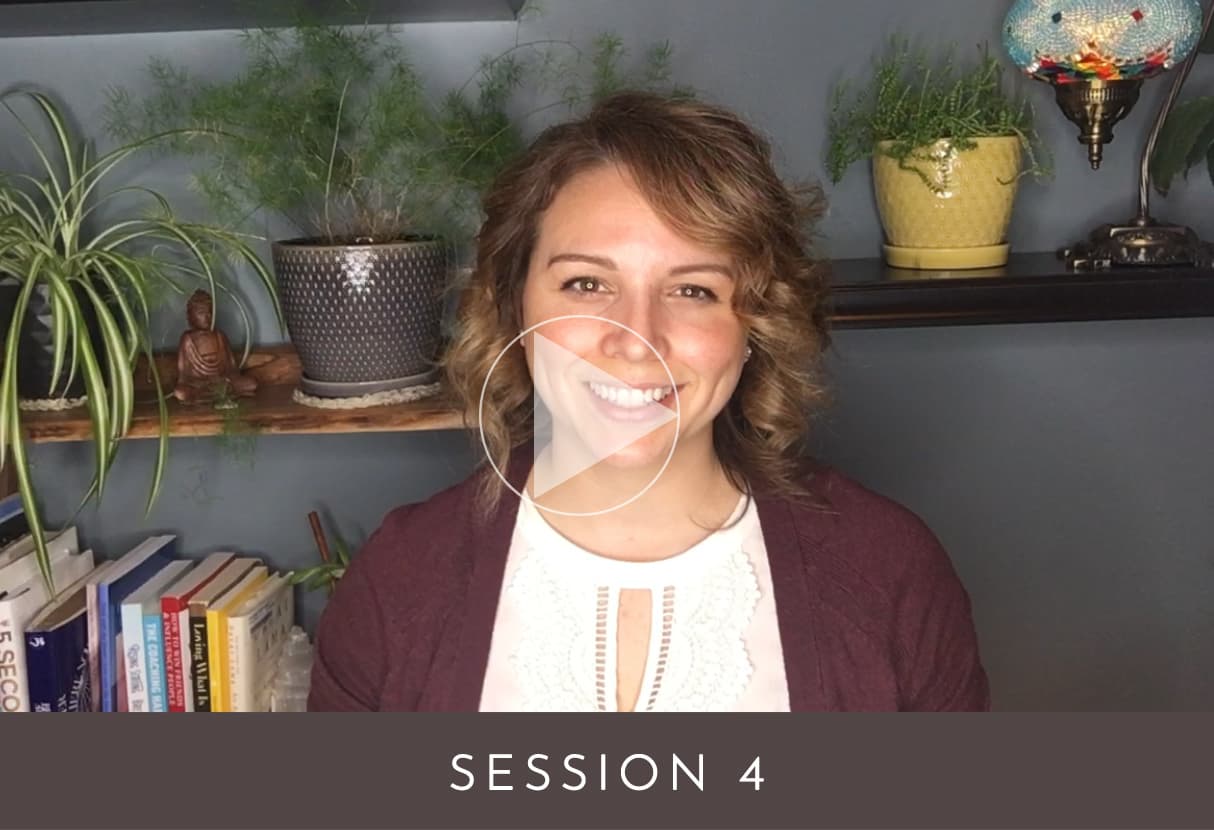This mini course reflects some of the fundamental principles from my signature one on one coaching program. You will experience a bit of what I teach in these in depth, personalized sessions as you work your way through the course.



STRESS DETOX
MINI COURSE



Welcome to Session 2 of the Stress Detox Mini Course!
Session 2 is about changing our relationship with stressful and anxious thoughts through meditation.
Before watching the video, we’ll first take a look at the three biggest ways meditation helps us change our relationship with our thoughts to create a lasting effect of resiliency against stress, anxiety and worry thoughts.
You are not your thoughts
Meditation is a time tested and scientifically proven tool to help with stress and anxiety. It’s been practiced for thousands of years and has been the subject of countless studies over the past several decades.
We’ve all heard that meditation is good for you and can help with stress. At this point, it’s pretty common knowledge.
In the last lesson we learned how to turn off the stress response in the moment with a breathing exercise.
This session is about how meditation creates lasting relief from stress and anxiety through lessons it teaches us.
Not just because you are stressed right now and a meditation session could make you feel better today. But for the long haul. It fundamentally changes our relationship with our thoughts and emotions.
I am a huge advocate for meditation. It has made a substantial difference in my life and was one of, if not the biggest tool for helping me overcome a lifetime of anxiety.
1. Meditation brings you into the present moment
Rumination, guilt and self-loathing are all feelings associated with thinking about things that happened in the past. We have thoughts like:
“I shouldn’t have said that in front of my boss.”
“I wish my childhood was happier.”
“I can’t believe I didn’t take that job offer.”
Worry, stress, fear and anxiety are felt when our thoughts are on the future like:
“I have so much to do.”
“I’m worried about what my sister will say when I see her.”
“What if traffic is backed up and I’m late?”
Meditation increases present moment awareness. And present moment awareness increases happiness.
In the present moment – unless there is an angry bear looking hungrily at your delicious thighs – there is no place for worry.
2. Meditation teaches you how to let go of thoughts
“My brain won’t shut up!!!” is what I told my doctor when I asked him for something to help me sleep. With worry and rumination it feels like we can’t stop thinking like a broken record player that won’t stop spinning.
Meditation is like going to the gym for your brain. Except instead of picking up weights to build muscle, you’re putting down thoughts to build strength of mind.
You’re building the “muscles” that bring your mind back to the present moment.
When you meditate you notice when thoughts arise, then you gently bring your awareness back. That awareness could be on the movement of your breath, the feel of your body, the sound of a mantra, or the visual of a mandala – back to the present moment.
Then your mind will wander again. Then you bring it back. Then it wanders. Then you bring it back. It’s like training a puppy. Over time, the puppy learns.
And over time your ability to let go of thoughts – especially those that do not serve you – grows.
3. Meditation teaches you to not run away from your feelings
When experience emotions that are unpleasant – fear, anger, sadness, irritation – we naturally want to avoid them, hide from them, or dull them with food, alcohol, drugs or tv.
We gravitate towards comfort because comfort in our minds equates to security.
But emotions aren’t things that can physically harm us. They can cause muscle tension, queasiness, heat, a sense of heaviness… but there is no physical harm involved.
I like to think of emotions as energy in motion. They are the energetic representation of our thoughts. They are experienced in the body through those physiological sensations listed above.
If we stop the energy from flowing, it can stagnates and gets stuck. It never finishes its flow through our body.
Once we learn the lesson of experiencing the present moment without judgement, we realize that what we’re experiencing needs to be felt at this time because that is what came up.
You experience it. You let it flow through you. You watch it pass. You witness how a thought or a feeling can’t harm you. It’s just passing through. Fighting it, ignoring it, suppressing it – these things solve nothing. Just like you can’t stop the clouds, you just need to let it pass. Without judgement.
And this acceptance is the path to peace and clarity. It can bring you to a level headed place to question what thought or underlying belief lead to this emotion – this energetic representation of what is happening internally.
Exercise #2: Meditation to find space between you and your thoughts
One of the great lessons meditation teaches us is to show us the difference between us and our thoughts. It shows us how fleeting thoughts are, how they can come and go and change as easily as clouds passing through the sky.
We find ourselves attached to these thoughts, we identify with them, we become them when we don’t realize we are not them, and this is a big source of stress.
There is a “you” beyond the fleeting thoughts in your mind. Some call it soul, Inner Self, or wise advocate… whatever you call it, there is a “you” that is separate from the ideas in your head.
As we meditate, we’re noticing the thoughts passing through. We witness with curiosity what has grasped our attention. And without judgement, we gently bring our attention back to our intended focus – in this case, we’re focusing on our breath.
Thoughts will continually pass through the mind while meditating because this is what our minds do. We’re not looking to force thoughts from our minds, it’s not possible. The only way you would know if your mind was clear would be to think “is my mind clear?” and then you would have been thinking.
In this guided introduction to meditation, you’ll start to see your thoughts as separate from yourself.
And with this newfound perspective, you start to create space between afflictive thoughts causing pain and stress, giving you freedom to examine or dismiss the thought, bringing you more peace, understanding or happiness.
Action plan
Make this a regular practice.
- Find one or two times a day you can dedicate to setting up somewhere quiet and focus on your breath. It could be five minutes a day 3 days a week. Just find a goal you can commit to as a starting point.
- When feeling stressed, anxious, angry, frustrated or irritated, continue to use the 4.5.7 breathing exercise.
What will get in your way from doing this?
Plan ahead and know where and when you will meditate.
Coming up next
You may be thinking “Ok, I’ve learned how to turn off stress, but I still have these stressful thoughts? How do I get rid of them?”
In the following session, we’ll learn how to challenge, change and let go of stressful thoughts to live the life of our choosing instead.
Are you looking for more personalized support on your Stress Detox journey?
This mini course has been adapted from my signature 1 on 1 coaching program.
As a stress and anxiety coach, I help women become the happiest version of themselves. Women who feel stuck in their patterns of self-bullying, lack of confidence, perfectionism, and believing they aren’t good, smart, or lovable enough and are ready to start feeling in control, confident and free.
Are you ready to become the happiest version of you?



Disclaimer: The information contained in this course is intended for educational and inspirational purposes only, and is made available to you as self-help tools for your own use personal journey toward health and happiness. It is not a substitution for medical advice, diagnosis or treatment from a licensed mental health professional.
Free access to the Stress Detox mini course is available for a limited time only.





